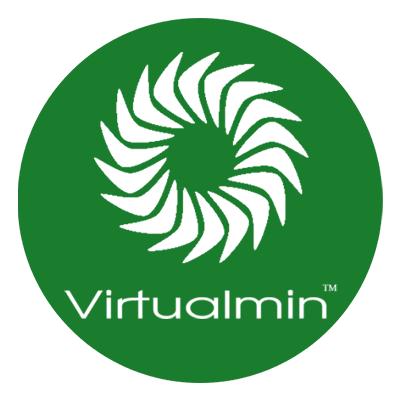Table of Contents
- Understanding the Value of Your Registered Domain Name
- Assessing the Market Demand for Domain Names
- Effective Strategies for Pricing Your Domain Name
- Choosing the Right Platform for Selling Your Domain
- Crafting an Attractive Listing to Attract Buyers
- Q&A
- The Conclusion
Understanding the Value of Your Registered Domain Name
Your registered domain name is more than just an online address; it’s an integral part of your brand identity and can significantly impact your online presence and marketability. The value of a domain name can vary widely based on several factors including its search engine optimization potential, length, memorability, and marketability. Investing in a prime domain name can offer substantial long-term benefits, making it easier for customers to find and remember your site.
When assessing the worth of your domain, consider the following key attributes:
- Length: Shorter domain names are easier to remember and type, enhancing user experience.
- Keyword Relevance: Domains that include keywords relevant to your industry can improve your search engine ranking.
- Brandability: A unique and catchy name can boost your brand’s credibility and attract more visitors.
To illustrate the potential investment return, consider the table below showing some popular domain sales:
| Domain Name | Sale Price | Sale Year |
|---|---|---|
| Voice.com | $30 million | 2019 |
| Holiday.com | $3 million | 2021 |
| Sex.com | $13 million | 2010 |
These examples highlight how the right domain name can command a premium price and serve as a valuable online asset. As you navigate the process of selling your registered domain, understanding these aspects can empower you to position your domain names competitively in the market.


Assessing the Market Demand for Domain Names
Evaluating the demand for domain names is essential for anyone looking to sell their registered assets effectively. Understanding current market trends can significantly enhance your chances of grabbing the attention of potential buyers. You should consider factors such as industry relevance, search volume, and keyword trends. By targeting domains that align with trending industries or emerging technologies, you position yourself to capitalize on lucrative opportunities.
Research indicates that specific sectors exhibit a consistently high demand for domain names. Focus areas include:
- Technology: Domains related to AI, cybersecurity, and fintech are particularly hot right now.
- E-commerce: As online shopping grows, domains with phrases related to shopping or specific products are in demand.
- Health & Wellness: With an increasing focus on health, domains associated with wellbeing services and products attract significant interest.
A key aspect of assessing market demand is analyzing sales data of similar domains. Constructing a comparison table can clarify the average prices based on industry or keyword rarity. Here’s an example reflecting recent domain sales:
| Domain Name | Industry | Sale Price |
|---|---|---|
| HealthNexus.com | Health | $12,000 |
| EcoShopper.com | E-commerce | $15,500 |
| AISolutions.io | Technology | $25,000 |
By leveraging this kind of data, you can gain insights into pricing strategies while identifying high-demand segments in the market, increasing your chances for a profitable sale. Continually monitoring marketplace activity will empower you to adapt your offerings and marketing strategies dynamically.


Effective Strategies for Pricing Your Domain Name
When it comes to determining the right price for your domain name, it’s essential to conduct thorough research. Start by examining the market trends and recent sales of similar domain names. Use platforms like GoDaddy Auctions, Sedo, or NameBio to analyze what similar domains are selling for. This will give you a benchmark and help you set a competitive price. Additionally, consider the domain extension (TLD) you possess. For example, .com domains often fetch higher prices than less popular extensions due to their familiarity and perceived value.
Another strategy is to highlight the inherent value of your domain name. Does it contain relevant keywords that could attract organic traffic? If so, be sure to emphasize this in your listing. Keyword-rich domains can significantly boost a business’s visibility in search results, making them more appealing to potential buyers. You should also consider the length and memorability of the domain. Short, catchy names are easier to remember and brand, which can add to their overall market value. You might also want to mention any existing traffic or SEO strength your domain has accrued.
don’t shy away from leveraging the power of negotiation. Many potential buyers expect to haggle, so be prepared to justify your asking price with solid data and reasoning. Additionally, consider offering flexible payment options or installment plans to make the purchase more accessible. Explore promotional strategies such as listing your domain on multiple marketplaces or employing social media to broaden your reach. This approach not only increases visibility but can also attract a diversified audience, enhancing your chances of selling for a fair price.


Choosing the Right Platform for Selling Your Domain
When it comes to selling your domain name, selecting the right platform is crucial for maximizing your chances of a successful sale. Numerous options exist, each with unique features and selling points. Some of the key platforms to consider include:
- Domain Marketplaces: Popular sites like Sedo, Flippa, and Afternic cater specifically to domain buying and selling, providing your listing with greater visibility.
- Online Auctions: If you’re looking to attract competitive buyers, auction platforms allow multiple bids, which can drive up your domain’s price.
- Broker Services: For those who prefer a hands-off approach, enlisting a domain broker can facilitate negotiations and provide valuable market insights.
Each platform comes with its own set of fees, which can impact your final earnings. Understanding the cost structures is vital before committing to any service:
| Platform | Fee Type | Typical Fee / Commission |
|---|---|---|
| Sedo | Listing Fee | 10% – 20% |
| Flippa | Success Fee | Up to $200 |
| Afternic | Commission | 15% of the sale price |
Before making your decision, consider factors like user base demographics and platform reputation. Selecting a service that aligns with your target audience can significantly enhance your chances of selling your domain quickly and at a good price. Take your time to evaluate all options and choose the one that best fits your specific selling strategy.


Crafting an Attractive Listing to Attract Buyers
Creating an enticing domain name listing is crucial to capturing potential buyers’ interest. Start by showcasing the uniqueness of your domain name. Highlight any memorable aspects, such as catchy phrases or industry-specific keywords. Be sure to include a concise but impactful description that outlines what makes your domain an excellent investment. It can be helpful to include aspects like the length of the name, its brandability, and how it stands out from competitors. For example:
- Short and Memorable: A domain that is easy to remember increases the chances of return visits and word-of-mouth referrals.
- Keyword Relevance: The inclusion of popular search terms can help potential buyers see the SEO benefits right away.
- Industry Specific: Highlighting a niche market can attract specific buyers who are looking for relevant names.
Another important aspect of your listing is visual appeal. Use high-quality images or infographics that illustrate the potential of your domain name. Consider including a table that summarizes key features, so buyers can easily assess its value. Here’s an example of how to present this information neatly:
| Feature | Description |
|---|---|
| Domain Age | 5 years – established online presence |
| Traffic Stats | 500 monthly visitors – good potential for growth |
| Registration Status | Registered – ready for transfer |
Lastly, encouraging buyers to act quickly can stimulate interest. Use phrases like “Limited Time Offer” or “Exclusive Opportunity” to create a sense of urgency. Mention any selling points that indicate why this specific domain is a wise choice now, such as upcoming trends in the industry that your domain fits into, or local events that might make it particularly desirable. Remember, the right listing not only attracts attention but also fosters a genuine interest in purchasing your domain.
Q&A
Q&A: Selling Registered Domain Names
Q1: What does it mean to sell a registered domain name? Selling a registered domain name involves transferring ownership of a web domain that you own to another party. This can be an established domain that has existing traffic and brand potential or a newly registered one that holds future possibilities. Essentially, it’s like selling a piece of virtual real estate.Q2: Why would someone want to sell their domain name? There are numerous reasons one might consider selling a domain. Perhaps you have multiple domains and want to streamline your assets, or you found a niche domain that’s spiking in value. Alternatively, you might no longer need the domain for a project or business—selling it can help recoup some of your investment.
Q3: What factors determine the value of a domain name? Domain value is influenced by several factors, including length, keyword relevance, brandability, and market demand. Short, memorable domains with popular keywords tend to fetch higher prices. Additionally, the age of the domain, overall traffic, and its history can also impact its valuation.
Q4: How can I sell my domain name? Selling a domain can be done through various channels. You can list it on dedicated domain marketplaces like Sedo or GoDaddy Auctions, or directly on websites like Flippa. Additionally, reaching out to potential buyers directly can yield results, especially if the domain is niche-focused.
Q5: What should I include in a listing for my domain? When crafting a listing, be sure to include a clear and concise domain name, a persuasive description highlighting its potential uses, any existing SEO value, and asking price. High-quality images and proof of traffic data can also enhance your listing’s attractiveness to potential buyers.
Q6: Are there any risks associated with selling domains? Yes, there can be risks. Buyers may attempt to negotiate aggressively, and without proper research, you might undervalue your domain. Moreover, ensure you’re using secure payment methods and clearly outline the transfer process to avoid issues post-sale.
Q7: What should I know about the legal aspects of selling a domain? Legally, it’s important to ensure that your domain doesn’t infringe on trademarks and is not associated with negative connotations that could affect its value. Furthermore, make sure to use a proper transfer process, usually handled through your domain registrar, to formalize the sale.
Q8: How do I prepare my domain for sale? To prepare your domain, make sure it’s renewing at a reasonable cost, free of any disputes, and has a clean history with no penalties. You might also want to enhance its value by optimizing the landing page or improving SEO rankings before putting it on the market.
Q9: Can I sell a domain name that I recently purchased? Yes, you can sell a recently purchased domain. However, it’s usually beneficial to hold onto a domain for a while to establish some degree of value. A domain’s worth often increases as it ages and may attract more potential buyers.
Q10: How do I finalize the sale of my domain? Once you’ve agreed on terms with the buyer, you’ll want to initiate the domain transfer process through your registrar. Typically, this involves unlocking the domain, obtaining an authorization code, and guiding the buyer through their registrar process. Always confirm that the payment is securely processed before completing the transfer.
This Q&A provides a foundational understanding for anyone interested in selling registered domain names, from exploring their value to the processes involved in making a sale.

